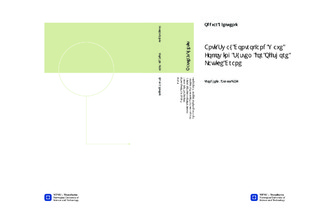| dc.contributor.advisor | Onshus, Tor Engebret | nb_NO |
| dc.contributor.advisor | Knappskog, Håvard | nb_NO |
| dc.contributor.author | Gjelstenli, Oddvar | nb_NO |
| dc.date.accessioned | 2014-12-19T14:06:28Z | |
| dc.date.available | 2014-12-19T14:06:28Z | |
| dc.date.created | 2012-11-11 | nb_NO |
| dc.date.issued | 2012 | nb_NO |
| dc.identifier | 567053 | nb_NO |
| dc.identifier | ntnudaim:7030 | nb_NO |
| dc.identifier.uri | http://hdl.handle.net/11250/260766 | |
| dc.description.abstract | Offshore crane operation is a complex task that demands the operator to control the position of the load, predict vessel motion and compensate for load sway, all at the same time. In this thesis an anti-sway, boom tip positioning and a wave following system is presented which purpose is to facilitate not automate the crane operation. Introducing such systems the operator has an extra set of tools to reduce risk of cargo damage and personnel injuries during operation. This is done by suppressing the sway angles and positioning the boom tip to a desired position with the anti-sway and boom tip positioning system, and be able to make the hook follow the heave motion of the vessel by using the wave following system.This thesis contains modeling, visualization, simulation and control of a rotary crane with spherical pendulum. Also models for a trolley with pendant load, vessel motion, and angular deflection of the wire and a wind model is presented. Lagrangian describes the dynamics of the crane models and the equation of motion is derived with Euler-Lagrange equations.The effect of measurement noise in the sensor signals has been reduced through the implementation of an adaptive Kalman-filter. Parameter estimation has been used to find unknown model parameters such as damping, frequency and bias in vessel heave motion model. Several suggestions of sensors to measure the swing angles of the hoist winch wire is presented. The 3D visualization is developed using the V-Realm 3D editor included in Simulink 3D Animation toolbox.Results of the closed loop system shows that it is possible to control the load swing angles and boom tip position and still let the crane operator have the superior control of the crane. In case of stability it can be seen that since all friction terms is neglected in the mathematical model there is no dissipation of energy in the pendulum dynamics, meaning that the anti-sway controller causes any observed damping in the sway dynamics. | nb_NO |
| dc.language | eng | nb_NO |
| dc.publisher | Institutt for teknisk kybernetikk | nb_NO |
| dc.subject | ntnudaim:7030 | no_NO |
| dc.subject | MITK teknisk kybernetikk (2 årig) | no_NO |
| dc.title | Anti-Sway Control and Wave Following System for Offshore Lattice Crane | nb_NO |
| dc.type | Master thesis | nb_NO |
| dc.source.pagenumber | 119 | nb_NO |
| dc.contributor.department | Norges teknisk-naturvitenskapelige universitet, Fakultet for informasjonsteknologi, matematikk og elektroteknikk, Institutt for teknisk kybernetikk | nb_NO |

